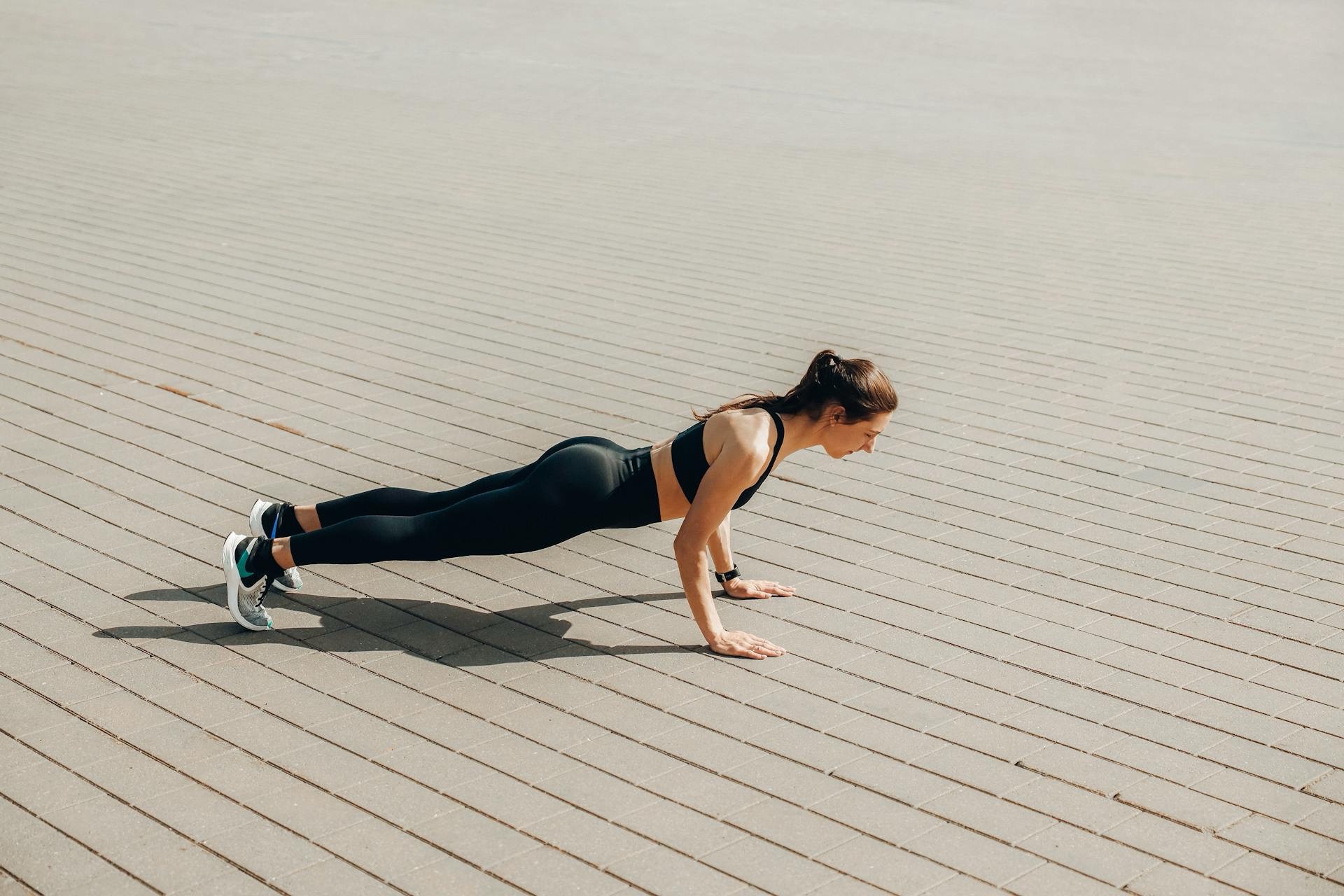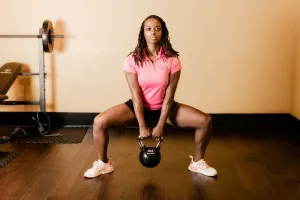Core strength is essential for overall body stability, balance, and posture. A strong core supports the spine, reduces the risk of injury, and alleviates back pain by distributing stress more evenly throughout the body. Poor core strength often leads to muscle imbalances, poor posture, and increased strain on the lower back, which can contribute to chronic back pain. Incorporating specific sports and exercises that target the core muscles can significantly enhance spinal health and reduce back discomfort.
Here are 16 sports and exercises that help improve core strength and reduce back pain, along with detailed explanations of how each activity benefits the core and back.
1. Swimming

Swimming is one of the best low-impact sports for strengthening the core and alleviating back pain. The buoyancy of the water reduces the strain on joints and the spine, while the resistance provided by the water helps engage the core muscles during every stroke. Swimming strokes like the freestyle, backstroke, and butterfly all work the core while promoting better posture and spinal alignment.
How It Improves Core Strength and Reduces Back Pain:
Swimming strengthens the muscles that support the spine, including the abdominals, lower back, and obliques. The constant engagement of the core while swimming helps improve posture and balance, reducing pressure on the lower back. The low-impact nature of swimming makes it an excellent exercise for those recovering from back pain or looking to prevent it.
2. Pilates

Pilates is a form of exercise that focuses on controlled movements, balance, flexibility, and core strength. Many Pilates exercises target the deep core muscles, including the transverse abdominis, which acts as a natural “corset” for the spine. Pilates also emphasizes body awareness and correct posture, helping to prevent and reduce back pain.
How It Improves Core Strength and Reduces Back Pain:
Pilates strengthens the stabilizing muscles of the core, including the lower back and abdominal muscles. By improving spinal alignment and posture, Pilates helps reduce the pressure on the lower back. Exercises like the “plank,” “bridges,” and “hundreds” in Pilates specifically target the muscles needed to support the spine, promoting better balance and reducing the risk of back injuries.
3. Yoga

Yoga is a holistic exercise that combines stretching, strength training, and mindfulness. Certain yoga poses, such as plank, boat pose, and downward dog, engage the core muscles and improve spinal alignment. Additionally, yoga helps improve flexibility, which can alleviate tension in the lower back and hips, areas that are often tight and contribute to back pain.
How It Improves Core Strength and Reduces Back Pain:
Yoga builds core strength by engaging the abdominal, oblique, and lower back muscles in poses that require stability and balance. Regular practice improves spinal flexibility and posture, both of which help to reduce pressure on the back. Yoga also helps relax tight muscles, improving overall body alignment and reducing the likelihood of strain or injury.
4. Cycling

Cycling is a cardiovascular exercise that requires significant core engagement, especially when maintaining balance and posture on the bike. Whether on a stationary bike or riding outdoors, proper cycling form involves engaging the core to stabilize the upper body while the legs do most of the pedaling work. This helps improve core endurance and reduces strain on the lower back.
How It Improves Core Strength and Reduces Back Pain:
Cycling strengthens the lower back and abdominal muscles, which are essential for maintaining good posture while cycling. Engaging the core throughout the ride helps protect the spine and improves balance. Additionally, the low-impact nature of cycling reduces the risk of aggravating back pain, making it a great option for those recovering from injuries or seeking to avoid high-impact exercises.
5. Rowing

Rowing, whether on a rowing machine or in the water, is a full-body workout that heavily engages the core muscles. Proper rowing technique requires the engagement of the abdominals, obliques, and lower back muscles to drive the movement and maintain a strong posture. The repetitive rowing motion helps strengthen the muscles that support the spine while improving overall endurance.
How It Improves Core Strength and Reduces Back Pain:
Rowing engages the core throughout the rowing stroke, promoting strong posture and stability. The exercise strengthens the muscles that support the spine and improves spinal alignment, which can help reduce back pain. Rowing is also a low-impact exercise, which minimizes strain on the joints and back while still providing an effective workout for core strength.
6. Planks

Planks are one of the most effective exercises for building core strength because they engage multiple muscle groups, including the abdominals, obliques, lower back, shoulders, and glutes. This static hold requires the core muscles to stabilize the body and maintain proper alignment, making it an excellent exercise for improving core endurance and reducing back pain.
How It Improves Core Strength and Reduces Back Pain:
Planks directly target the deep core muscles that stabilize the spine. By strengthening these muscles, planks help improve posture and support the lower back, reducing the risk of pain or injury. Regularly practicing planks can also increase overall body awareness, helping you maintain better posture throughout the day.
7. Stand-Up Paddleboarding (SUP)

Stand-up paddleboarding is a water sport that requires balance and core engagement to stay upright on the board while paddling. The act of balancing on the board while moving through the water engages the deep core muscles, while the paddling motion works the obliques, lower back, and abdominal muscles.
How It Improves Core Strength and Reduces Back Pain:
SUP strengthens the stabilizing muscles of the core as you maintain balance on the board. The paddling motion also targets the lower back and obliques, improving strength and endurance in the muscles that support the spine. Additionally, SUP is low-impact, making it a great option for building core strength without putting strain on the back.
8. Walking and Hiking

Walking and hiking are simple yet effective ways to improve core strength, particularly when walking on uneven terrain or uphill. Both activities require the engagement of core muscles to maintain balance and stability, especially when walking on sloped or rocky surfaces. Walking and hiking also promote better posture, which can help alleviate back pain caused by poor alignment.
How It Improves Core Strength and Reduces Back Pain:
Walking and hiking engage the core muscles to stabilize the body and maintain proper posture. Uphill walking or hiking on uneven terrain challenges the lower back and abdominal muscles, promoting strength and stability. Regular walking or hiking can also improve posture, reducing the strain on the lower back and alleviating pain.
9. Basketball

Basketball involves quick directional changes, jumps, and sprinting, all of which require core engagement for balance and stability. The dynamic nature of the sport helps develop a strong core as players work to maintain control over their body while performing fast-paced movements on the court.
How It Improves Core Strength and Reduces Back Pain:
Basketball strengthens the core through constant movement and the need to stabilize the body during jumps, sprints, and direction changes. A strong core helps players maintain balance and reduce the risk of injury, especially in the lower back. The high-energy movements in basketball also improve endurance in the muscles that support the spine, helping to alleviate back pain.
10. Tennis

Tennis involves a combination of quick footwork, balance, and rotational movements, all of which engage the core. The twisting and turning involved in serving and returning shots strengthens the obliques and lower back, which are key muscles for core stability and spinal support.
How It Improves Core Strength and Reduces Back Pain:
The rotational movements in tennis engage the oblique muscles, helping to strengthen the sides of the core and reduce back strain. Tennis also requires core engagement to maintain balance during lateral movements, which helps improve stability and posture. Strengthening these muscles helps protect the spine and reduce back pain.
11. Running

Running is a cardio-intensive exercise that engages the core muscles to maintain good posture and stability. While running, the core works to stabilize the pelvis and spine, preventing excessive movement that could lead to back pain. Running on uneven terrain or incorporating hill sprints can further challenge and strengthen the core.
How It Improves Core Strength and Reduces Back Pain:
Running strengthens the deep core muscles, particularly the lower abdominals, which help stabilize the pelvis and spine during movement. Stronger core muscles can improve running posture and reduce the risk of lower back pain caused by poor alignment or muscle imbalances. Running on different terrains also engages the core more intensely, further improving strength and stability.
12. Boxing

Boxing involves rotational movements, balance, and coordination, all of which engage the core muscles. The twisting required for punches targets the obliques and lower back, while maintaining balance and footwork engages the abdominal muscles. Boxing workouts often include core-strengthening exercises like sit-ups and leg raises, further enhancing core stability.
How It Improves Core Strength and Reduces Back Pain:
Boxing strengthens the core through constant engagement during punches and footwork. The rotational movements required for powerful punches help build strength in the obliques and lower back, promoting spinal stability and reducing back pain. Boxing also improves overall body coordination and posture, which are key factors in preventing back strain.
13. Rock Climbing

Rock climbing is a full-body workout that requires significant core engagement to maintain balance and control while scaling a wall or rock face. Climbers must use their core muscles to stabilize their body as they reach for handholds and footholds, making it an excellent exercise for developing both core strength and stability.
How It Improves Core Strength and Reduces Back Pain:
Rock climbing strengthens the core through constant engagement during climbing movements. The act of stabilizing the body while reaching and pulling improves both abdominal and lower back strength. A strong core helps climbers maintain balance and reduces the strain on the spine, which can help alleviate back pain and prevent injury.
14. Golf

Golf may seem like a low-intensity sport, but the rotational movements involved in swinging a golf club engage the core muscles, especially the obliques and lower back. Maintaining balance and posture throughout a golf swing requires strong core engagement, making golf a useful sport for improving core strength and reducing back pain.
How It Improves Core Strength and Reduces Back Pain:
The rotational nature of the golf swing targets the oblique muscles and lower back, helping to build core strength. A strong core provides stability during the swing, reducing the risk of back pain caused by poor posture or muscle imbalances. Golf also promotes better posture and body awareness, both of which are important for maintaining a healthy spine.
15. Surfing

Surfing requires significant balance, core strength, and coordination to stay upright on the board while riding waves. Paddling out to the surf engages the upper body and core, while standing and riding waves challenges the core muscles to maintain stability and control.
How It Improves Core Strength and Reduces Back Pain:
Surfing strengthens the core through the balance and stabilization required to stay on the board. The paddling motion also engages the lower back and abdominals, helping to build overall core endurance. Strong core muscles help surfers maintain good posture and reduce the strain on the spine, which can help alleviate back pain.
16. Tai Chi

Tai Chi is a gentle martial art that focuses on slow, controlled movements, balance, and mindfulness. Many Tai Chi movements involve engaging the core muscles to maintain balance and stability, while the flowing nature of the exercises promotes flexibility and body awareness. Tai Chi is particularly beneficial for improving posture and reducing back pain through low-impact movement.
How It Improves Core Strength and Reduces Back Pain:
Tai Chi strengthens the core by requiring constant balance and slow, deliberate movement. The exercise promotes good posture and spinal alignment, which helps reduce the risk of back pain. Tai Chi’s emphasis on mindfulness and relaxation also helps reduce tension in the lower back, further promoting spinal health and overall well-being.
Conclusion
Improving core strength is essential for reducing back pain and maintaining overall spinal health. The 16 sports and exercises outlined in this article target the core muscles, including the abdominals, obliques, and lower back, helping to build strength and stability in the muscles that support the spine. Incorporating these activities into a regular fitness routine can improve posture, reduce the risk of injury, and alleviate chronic back pain. Whether through low-impact exercises like swimming and Pilates or more dynamic sports like tennis and basketball, strengthening the core is key to maintaining a healthy, pain-free back.




